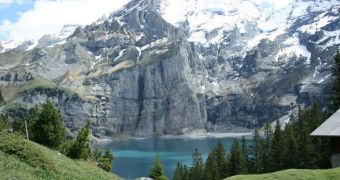Around the world, global warming is beginning to make its effects felt with increasing intensity, say researchers at NASA. The team recently complete the first comprehensive global survey of temperature trends in major lakes on all continents.
Their investigation covered a 25-year time span, and its conclusion was that the vast majority of lakes have gotten warmer during this time than they were in the past. The researchers say that the process developed in response to climate change.
Some 167 lakes were analyzed from orbit using satellites. The research was conducted by investigators at the NASA Jet Propulsion Laboratory (JPL), in Pasadena, California, who were led by experts Philipp Schneider and Simon Hook.
Using National Oceanic and Atmospheric Administration (NOAA) and European Space Agency (ESA) satellites, the team was able to derive long-term trends from the readings they collected.
The rate of warming was found to be about 0.81 degrees Fahrenheit per decade, which may not seem like much for a ten-year period, but which is very significant at a global level.
If temperatures increase by as little as 2 degrees Celsius, then the world as we know it would change, experts say. Sea levels would increase, and huge swaths of polar ice sheets would disappear.
In some case, the research team found that lakes warmed at a rate of 1.8 degrees Fahrenheit per decade. The mid-to-high latitudes of the Northern Hemisphere were most affected by climate change.
“Our analysis provides a new, independent data source for assessing the impact of climate change over land around the world,” explains Schneider, who was also the lead author of a research paper.
The work was published in this week's issue of the esteemed scientific journal Geophysical Research Letters,” officials at NASA report.
“The results have implications for lake ecosystems, which can be adversely affected by even small water temperature changes,” Schneider says. Algal blooms are known to respond well to increases in temperature.
These microorganisms can destroy native species through suffocation, by consuming all the oxygen in their surroundings. They then multiply faster, beginning the cycle anew.
The recent investigation was carried out on lakes that had a surface of at least 193 square miles. This was done so that the scientists could have access to the most relevant data.
Data collected by the team will also be included in future climate models, to provide a comprehensive and accurate view of how land temperatures change over decades.

 14 DAY TRIAL //
14 DAY TRIAL //